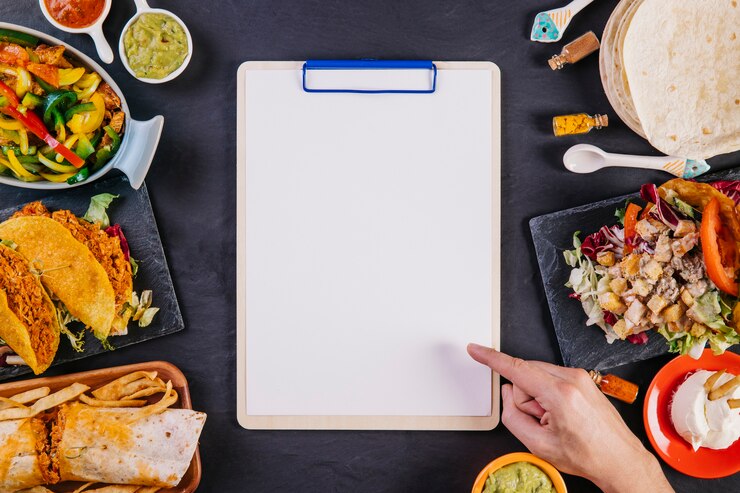When you’re a caterer, it can feel like your entire life revolves around food. And it kind of does — food is the driving force behind all of our events, so it is a major factor in your professional life!
One of the most important aspects of offering a high-quality catering service is creating a well-balanced menu. You want your guests to enjoy every course and leave feeling full but also satisfied enough not to go straight to dessert.
Keep reading to learn creating a menu and let your guest experience the best dining experience of their lives.
Let’s begin!
The Foundation: Understanding The Basics
Before we dive into crafting the perfect menu, let’s take a moment to understand the basics. A well-balanced menu should be a harmonious blend of flavors, textures, and colors. It should offer variety and cater to different tastes and dietary preferences. Here are some key elements to consider:
Know Your Audience
Every occasion and group of guests is unique. Are you planning a family gathering with kids, a casual hangout with friends, or a formal dinner party in the city that calls for the best catering in New York? Knowing your audience’s preferences and dietary restrictions is crucial. Ensure your menu is suitable for the occasion and your guests.
Balance The Five Tastes
The five fundamental tastes-sweet, sour, bitter, salty, and umami-should be well-represented throughout the menu. Strive for a balance between these tastes to create a memorable dining experience.
Consider Dietary Restrictions
In today’s diverse culinary landscape, dietary restrictions and preferences are common. Make sure to include options for vegetarians, vegans, and those with food allergies or sensitivities.
Appetizers: Whetting The Appetite
The first course of your menu, appetizers, plays a crucial role in setting the tone for the entire meal. They are designed to whet the appetite and get your guests excited for what’s to come. Here are some appetizer ideas for different occasions:
Casual Family Dinner
For a laid-back gathering, consider a platter of bruschetta with diced tomatoes, fresh basil, and a drizzle of balsamic glaze. It’s a light and refreshing option that everyone can enjoy.
Romantic Date Night
Elevate your evening with oysters on the half-shell served with a mignonette sauce. Oysters are known for their aphrodisiac properties, making them an excellent choice for a romantic dinner.
Grand Celebration
If you’re celebrating a special occasion, go for a charcuterie board featuring an assortment of cured meats, artisan cheeses, olives, and crusty bread. It’s a crowd-pleaser that exudes elegance.
Balancing flavors, textures, and portion sizes is essential when creating an appetizer menu. Ensure a variety of options to cater to different tastes while keeping the portions small enough to leave room for the main course.
Main Courses: The Heart Of The Feast
The main course is the centerpiece of any meal, and it’s where your culinary skills can truly shine. When crafting a well-balanced menu, it’s essential to select dishes that complement each other and provide a satisfying dining experience.
Protein And Vegetarian Options
Consider offering a balance of protein-based and vegetarian dishes. For example, if you’re serving a roasted chicken with herbs, accompany it with a rich mushroom risotto for your vegetarian guests.
Flavor Profiles
Ensure that your main courses offer a variety of flavor profiles. If you’re serving a spicy Thai curry, balance it with a milder dish like a lemon herb-roasted fish to cater to different palates.
Sides And Accompaniments
Don’t forget about the sides and accompaniments. A crisp salad, roasted vegetables, or a fragrant pilaf can elevate the main course and provide a well-rounded meal.
Remember, the key to a well-balanced menu is diversity. Include a variety of dishes that showcase different cooking techniques and ingredients and aim to create a harmonious progression from the appetizer to the main course.
Quenching Thirst: Beverage Selection
The drinks you serve can greatly enhance the dining experience. Consider the following when planning your beverage menu:
Non-Alcoholic Options
Ensure that there are appealing non-alcoholic choices for those who prefer not to drink alcohol. Virgin cocktails, sparkling water with citrus, and fruit juices can be delightful alternatives.
Alcoholic Choices
If you’re serving alcohol, offer a selection of wine, beer, and spirits. Be sure to provide both red and white wine options. Craft beer and specialty cocktails can add a unique touch to your menu.
The Art Of Pairing
Think about pairing wines, beers, or non-alcoholic beverages with different courses. A full-bodied red wine goes well with a hearty beef dish, while a crisp white wine complements seafood.
Mocktail Magic
Don’t forget the mocktails. They’re not only for designated drivers but also for guests who prefer a refreshing non-alcoholic drink.
Desserts: Sweet Endings
No meal is complete without a sweet ending, and desserts offer the perfect opportunity to delight your guests with a final burst of flavor. Whether you’re a fan of decadent chocolate treats or fruity delights, there’s a dessert for every occasion.
Decadent Indulgence
For a grand celebration, consider a rich and indulgent dessert like a flourless chocolate cake with a raspberry coulis. The combination of dark chocolate and tart raspberries is a luxurious way to conclude the meal.
Light And Refreshing
If you’ve just enjoyed a heavy main course, a light and refreshing dessert is the way to go. Lemon sorbet or a fruit salad with mint-infused syrup can cleanse the palate and leave your guests feeling satisfied but not overly full.
Comfort Classics
Sometimes, simple classics are the most comforting. A warm apple pie with a scoop of vanilla ice cream or a plate of freshly baked chocolate chip cookies can be the perfect ending for a casual family dinner.
Creating a well-balanced dessert menu involves considering the intensity of flavors and the overall satisfaction factor. Be mindful of the portion sizes, as desserts are typically smaller than main courses. A well-balanced dessert should leave your guests with a sweet memory, not a sugar coma.
Creating A Menu For Every Occasion
In conclusion, creating a menu that caters to all tastes and occasions is key to a successful dining experience. By incorporating appetizing appetizers, satisfying main courses, and delectable desserts, you can impress your guests and elevate any gathering or event.
So, next time you plan a meal, remember to carefully curate an alluring menu that will leave everyone satisfied. Don’t forget to experiment and have fun with it!
If you’re hungry for more content like this, then make sure to check out the rest of our blog!
Read Also:




























